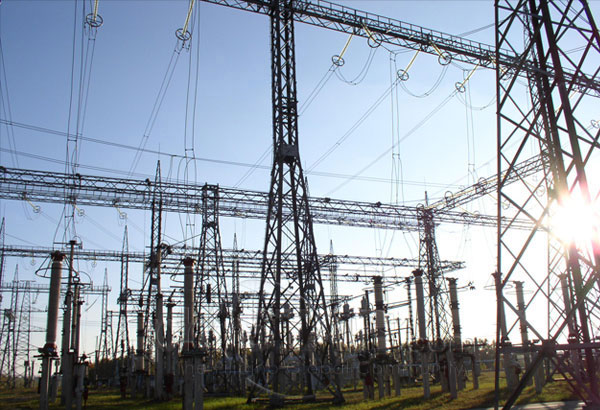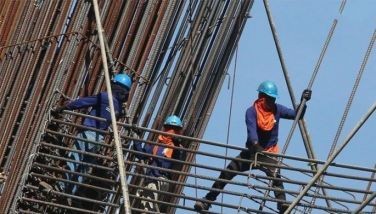A robust 2015 outlook

In my first column for this year, I shared with you some wishes and predictions of many of our partner entrepreneurs for 2015. Many of them looki forward to a more robust economy. With the growth momentum and continued reforms, the economic fundamentals are getting even better.
I have sought some inputs from two good friends Dr. Bernie Villegas and Romy Bernardo, who are leading economists in our country today. Let me share with you their insights.
Dr. Bernie essentially cited the phrase “the new mediocre,” a newly coined phrase of Christine Legarde, the new head of IMF, as she describes the lackluster growth that advanced countries are now doomed to suffer almost perpetually. Many believe that the former engines of growth—the US, Japan and Europe—may recover from their present malaise, but will not enjoy growth rates for the foreseeable future of more than two percent per annum in GDP.
With this development, focus is set on the emerging markets which exhibit four to six percent growth rates, with some hitting beyond six percent growth. Dr. Bernie said the Philippines could still notch a GDP growth rate of more than six percent per annum at least for the next five or more years. We would continue to receive $25 billion or more of remittances of OFWs; our BPO/KPO sector would continue to earn $15 billion or more employing one million workers and counting; close to 40 million Filipinos from low middle and high middle income households would spend the income from these two engines of growth on a variety of consumer goods and services, on housing, and on domestic tourism; the business sector would continue to demand spaces in office buildings for the increasing number of BPO/KPO workers spread out more and more outside of the National Capital Region; and we could experience a moderate renaissance of manufacturing as more Japanese and South Korean factories relocate in the Philippines as a consequence of much higher wages in China.
On the part of the government, there are enough institutional reforms that would guarantee that increasing percentages of our GDP would be spent on infrastructures and education. Dr. Bernie believes that extra effort against corruption, reforms and program implementation would be needed so that the Philippines could grow over eight percent or 10 percent for several years for poverty incidence to go down.
Romy also shares similar views as he cited the plunge in oil prices to record lows ($ 46-$48/barrel) unseen since 2009-– half of what these were just a year ago. And while the 2009 drop was primarily due to low demand with the financial crisis, this current one is mostly due to higher supply. Thus, low prices to last longer.
The Philippines would benefit from the decline in oil prices, estimating an incremental two percentage points of GDP growth if oil prices average a pretty low $ 40/ barrel for the year.
Romy’s view is more in the area of 0.25 to 0.5 percentage points, based on an average price of $ 60/barrel. He is assuming a fairly quick downward adjustment in pump prices, transport fares and cost of goods, so that the savings are captured by a wide consumer base and translated into increased economic activity.
Lower cost of oil will further boost current account. The other benefit to the economy will be lower inflation to around three percent which could keep interest rates low.
The emergent recovery in the US market promises healthy export growth of around 10 percent. Similarly, overseas remittances are expected to continue to rise and even more in peso terms with the strengthening dollar. But Romy views that the Philippine peso would not appreciate much, keeping to around P44.00, considering efforts to preserve export competitiveness.
All told, Romy’s group at GlobalSource thinks the economy would do better this year and next—at 6.5 percent GDP growth. Their group seems to be right on about 6.1 percent growth for 2014. The 2015growth would be propelled by the same factors mentioned, plus industries that are fueled by favorable interest rate environment- real estate, construction, and consumer retail.
Global Source thinks that the economy could have done better if there was more infrastructure spending. Annual infrastructure spending is still only at three percent of GDP, only half of our neighbours. Poor infrastructure spending also result in problems in ports, traffic congestion, airports, water, power.
The group also thinks we could improve the quality of growth and make it more inclusive. Poverty, unemployment and underemployment indicators at 25 percent, six percent and 20 percent, respectively, remain weak. While government made progress in social spending (conditional cash transfers, public education, universal health), financial inclusion initiatives (SME support, Go Negosyo Law, organizing the Credit Information Corp.), and addressing long-standing civil strife (the Bangsamoro initiative), we need fundamental reforms that wouldl generate more investments and jobs, especially in manufacturing and agriculture/agribusiness.
These reforms include opening up to more foreign investments, coherent industry road maps including rationalizing fiscal incentives, clearer policies and programs for agriculture post-CARP, including on land ownership, customs modernization, compliance with Asean-2016 single window for international trade, improving port and cargo handling, greater competition in domestic shipping, liberalization of rice and sugar trade, a competition policy law, cutting down red tape on small business, support for micro enterprises and agri-entrepreneurship and labor laws that encourage job creation like the apprenticeship law.
This administration could complete the reforms it started to attain quality growth of six to seven percent. Such growth performance could half our poverty incidence in 10 years and could even eradicates it later.
***
Congratulations to Emilio “Bong” Macasaet III, former head of sales in RFM and now an entrepreneur/distributor/trainor and part of our partner Josiah Go’s Mansmith and Fielders Group, for launching his new book on Distributor Management. He ably presents the winning tools in managing distributors as partners.
- Latest
- Trending






























